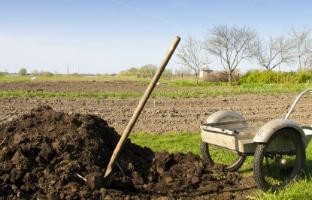Carbon and compost: Gardening in a time of climate change

What if one of the most compelling responses to the overabundance of carbon in the atmosphere is to restore the carbon in the ground beneath our feet? And what if the best inspiration and model for this carbon-restoring work is to be found in the life of a gardening God?
Like a good gardener, God loves compost because compost is the basis for fertility and fecundity. It is where carbon takes some of its most dense and complex forms.
In his lovely book The Gardener’s Year, the great Czech writer Karel Čapek says that heaps of compost are the primary monuments that gardeners love to build. If such a gardener could have been at the Garden of Eden, he or she would have sniffed excitedly and said, “Good Lord, what humus!” God loves the rich layers of organic matter and the billions of microorganisms, fungi, bacteria, and earthworms that move through soil because it is in their movement that terrestrial life’s richness is found. Healthy soil comes first. It is quite literally the foundation upon which our life rests. No humus, no humanity.




